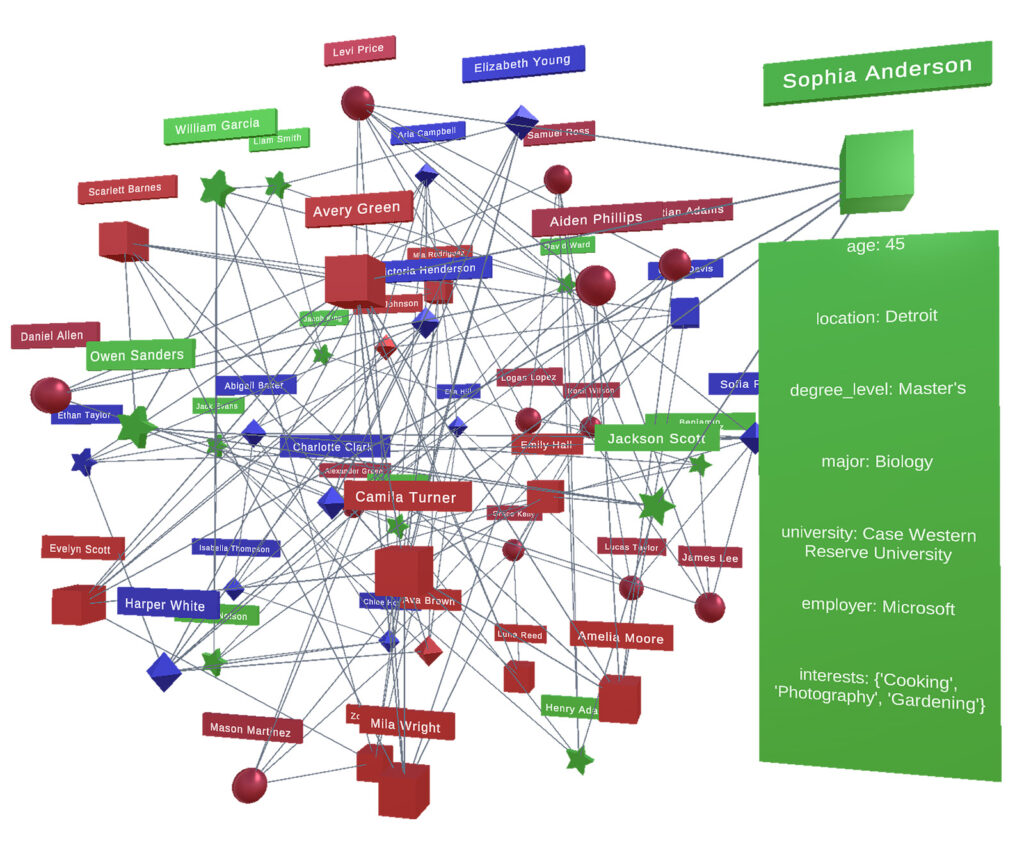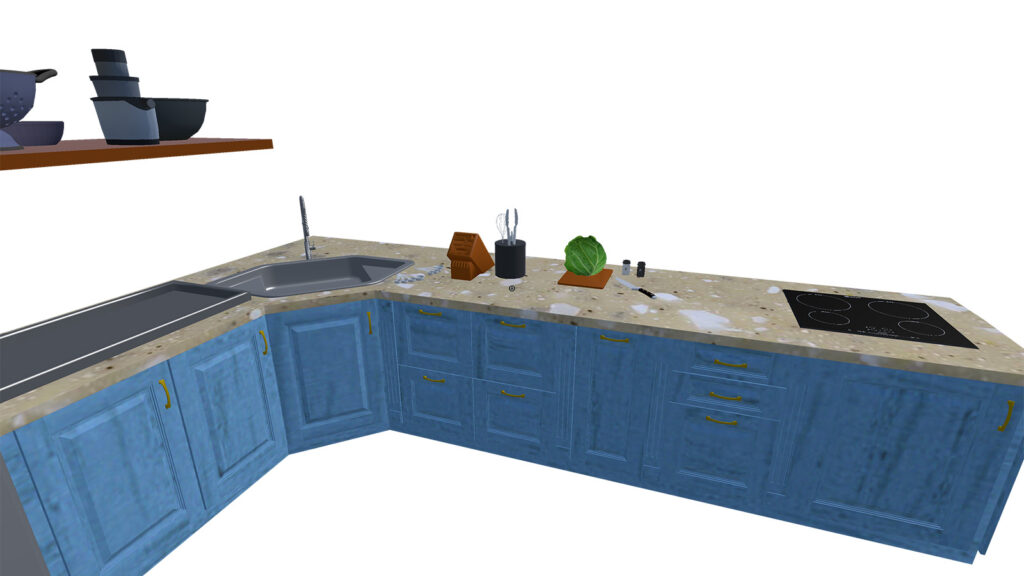
Many students experience entire academic careers studying molecules through pen and paper: interacting with their subject matter through written symbols, abbreviations, and calculations. This linear work makes it difficult to recall that molecules pertain to physical matter that exists in three dimensions. The relatively new field of DNA Origami explores how the folds, twists, and turns of DNA –
the code of life – determine, in part, its function. Assistant Professor Divita Mathur (Chemistry, CAS) wanted to make a tool in XR that allowed her students to experience the physical dimension of molecules, by engaging with it physically and seeing the shape in true 3D.
During her fellowship year at the IC, Mathur created ChiReality, an XR app that allows students to explore aspects firsthand, such as chirality (the direction something twists, i.e., its ‘handedness’). In the first module, students walk through a field of exaggerated helices depicted as bamboo stalks.
They use their hands and bodies to determine whether a helix is right- or left-handed and “harvest” it into the proper bin. The experience is gamified so that students work in teams to correctly identify chirality and then correct any misidentified stalks in order to win a higher score. Eventually, Dr. Mathur hopes to introduce varying levels of difficulty, allowing students to progress to sorting less symbolic structures, working with actual molecules, and potentially using chemical 'building blocks' to construct them.





